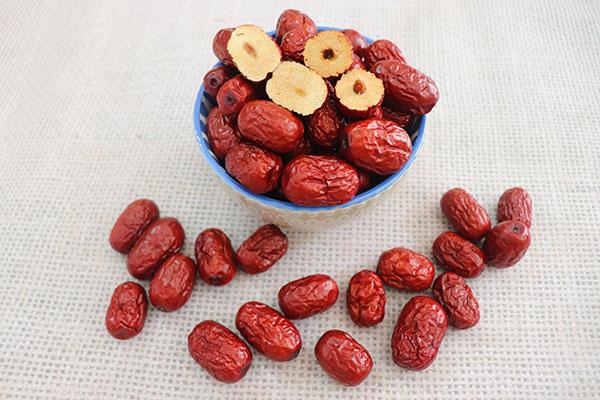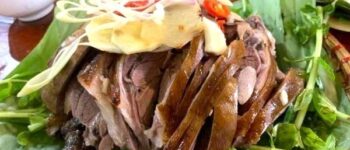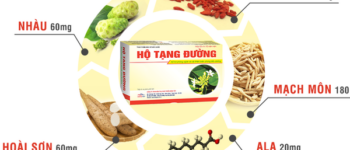Recently, a fruit that has attracted a lot of people's attention is the Korean Red Apple. This is not only a familiar ingredient in many stews used to improve health such as: chicken soup stewed with ginseng, chicken soup stewed with Chinese medicine or cooling summer dishes such as snow nest sweet soup, goji berry red apple sweet soup. longan, red apple and lotus seed sweet soup. So do you know what effects Korean red apples have? How much does 1kg of Korean red apples cost? Who should and should not use it? How to distinguish it from other red apples? Please refer to NONAZ more specifically in this article.
- Bộ Y tế khuyến cáo các biện pháp bảo vệ sức khỏe trong và sau ngập lụt
- Cá tầm, Trứng cá tầm [Món ngon từ cá tầm, trứng cá tầm]
- Có thể phát hiện sớm nguy cơ, giúp phòng ngừa ung thư, đột quỵ bằng công nghệ giải mã gen
- PhD tham gia Triển lãm Pharmedi Vietnam 2024
- Quả ‘thần dược’ của Trung Quốc rẻ chưa từng có, giá sầu riêng tăng trở lại

Introducing Korean Red Apples
Korean red apples in Korean are called daechu (대추, jujube), which is a dark red fruit, smaller and has a more wrinkled skin than other red apples on the market. Usually, dried red apples are called jujubes, jujubes or jujubes. Products have many different types of origin such as Xinjiang red apples, China, Japanese red apples, and also Vietnamese red apples.
Among them, Korean red apples are popular and are considered to have firmer flesh and a much sweeter flavor and are considered a precious ingredient alongside red ginseng, lingzhi, and ginseng.
Characteristics of Korean red apples
As I shared above, in addition to the common name red apple, they are also referred to by a number of other names such as: American apple, orange apple, red jujube, jujube, pink apple, giant apple,… to help you more easily visualize this type of red apple tree, specifically this is the type of tree:

– Small woody plant, less than 10m high; – Each canopy consists of 7-8 flowers, they grow in a canopy under the leaves, blooming in abundance in April – May, light green or yellow; – Leaves The plants grow alternately, with short stems ~ 1cm, with thorns on the side; – The fruits are spherical or ovoid, about ~ 32mm in size, when ripe they are dark red, whereas when unripe they are light green or brown. Usually in July – August, many fruits will appear.
Red apples are a fruit originating from Syria and North Africa, and have also migrated to China and India from there. Currently in Vietnam, many red apples have been experimentally planted in the Northern provinces but still do not provide as much output and good quality as Korea.
Compare Xinjiang red apples and Korean red apples
Xinjiang red apple
– First, Xinjiang red apples are often sold in many places such as markets and supermarkets. It is not difficult for us to find this type with thick white flesh and large fruit. – Xinjiang red apples are used a lot in Chinese sweet soups or stews. This product originates from China. – Xinjiang red apples are sold at a fairly cheap price, in the market the price of 1kg of apples can range from 65,000 VND – 150,000 VND depending on the place of sale.
 What is Tan Cuong red apple?
What is Tan Cuong red apple?
Korean dried red apples
Korean dried red apples are a little different. In terms of appearance, Korean red apples are darker in color, smaller and have more wrinkled skin than Xinjiang apples. However, Korean red apples have firmer flesh and a sweeter flavor than Xinjiang red apples.
How much do Korean red apples cost?
The price of Korean dried red apples is much higher than that of Xinjiang red apples, ranging from 150,000 – 350,000/kg. They are often sold in Korean food stores and functional food supermarkets.

What are the effects of Korean red apples?
Korean red apples are famous as a superfood that brings many wonderful effects.

– In terms of oriental medicine: Red apples have a neutral nature, sweet taste and are attributed to the meridians: Liver – Spleen – Taste – Kidney – Tam – Lungs. Uses: benefits the heart and lungs, benefits the taste, nourishes the blood, calms the mind, nourishes the blood, etc. Furthermore, it also cures diseases such as: fast heartbeat, insufficient blood, thin stools, less food, fatigue.
– In modern medicine: Ingredients in red apples include: vitamin C, protein, lots of water, organic acids: gallic acid and malic acid,… especially the vitamin C content is higher than tangerines and oranges. , medlar, peach, grape, apple. Besides, it also contains: aromatic substances, organic acids, colorants, mineral salts, vitamin PP, B vitamins, vitamin A,… especially, the estimated iron content is that 100g of dried apples contain 1.7mg. . Effects of red apples on users:
Xem thêm : Cách khắc phục 8 tình trạng thiếu hụt chất dinh dưỡng thường gặp
Red apples are good for the heart: the fruit contains little sodium and potassium, so it helps stabilize blood pressure and relax blood vessels. It also contains fiber and polyphenols to help dissolve cholesterol. From there, signs related to internal inflammation and vascular plaque are also significantly reduced, so to make your heart healthier, take care to use 2-3 fruits every day!
Red apples help improve sleep and are good for the brain: the seeds and flesh of red apples are effective in increasing the quality and duration of sleep in mice. Moreover, this fruit also contains a lot of saponins, so it has the effect of improving memory. memory, sedation and anxiety reduction.

Good weight control: research has proven that this fruit has similar effects to famous beet juices or chia seeds that have properties in supporting the digestive tract. 15 minutes before a meal, if you eat an apple, it will help significantly reduce calories, because the fiber content in the fruit is large, so it actively contributes to the metabolism of cholesterol and sugar in food.
Good prevention of Alzheimer's disease: red apple peel contains many nutrients that are very good for the brain, thereby fighting harmful agents to the brain.
Eating red apples is very good for the digestive system: with a fairly high fiber content, it will improve the digestive system. Besides, the amount of carbohydrates helps increase movement speed and soften food, thereby helping to reduce constipation and become more laxative. In addition, the active ingredient polysaccharide enhances the health of the stomach and intestines while reducing the risk of damage caused by trauma, HP bacteria, and ulcers.
Contains substances that support cancer prevention and strengthen the immune system: because it contains many enzymes that have a strong antioxidant effect, it will help eliminate free radicals and fight inflammation. Therefore, they have the benefit of reducing inflammation as well as preventing pathogens, especially cancer. In addition, a few other vitamins: A, B, C along with magnesium work to make the body's immune system stronger.
Eating healthy is good for the bone and joint system: calcium and phosphorus will help strengthen bones and improve the overall health of the bone and joint system.
Smooth hair, beautiful skin: with anti-inflammatory and antioxidant properties, when using red apples you will significantly improve many skin problems such as dark spots, melasma, scars, acne or reduce itching due to eczema.
Antibacterial: the medicine contains a large amount of flavonoids, so it has a very strong anti-bacterial effect, especially betulinic acid has the ability to fight viruses that lead to flu.
Anti-asthma: Thanks to red apples being rich in antioxidants, they also help protect the lungs from damage caused by oxidation. In the peel of red apples, there is also the flavonoid quercetin that regulates the immune system, as well as reduces inflammation, thus reducing asthma and allergic reactions. According to many studies, people who eat a lot of apples have a lower risk of asthma. Eating 15% of large apples every day will reduce the risk of this disease by 10%.

How to distinguish genuine Korean red apples
To ensure the purchase of genuine Korean dried red apple products, consumers should choose to buy at Daedong's exclusive distribution store system nationwide. Here are a few notes to help you distinguish genuine Korean red apples:
– In terms of appearance, Korean red apples are different in appearance, especially domestic Korean apples have a darker apple color, the outer skin is wrinkled and dry, the fruit body is medium-sized, not too big or smaller. The taste of this apple is fragrant but not too sweet like Xinjiang red apples (Chinese apples) and the flesh is firm. Currently, Korean dried red apples have a much higher selling price than red apples from Xinjiang.
– Gyeongsan Korean red apples do not weigh 1,000 grams. The Gyeongsan Korean red apples that Hoang Gia provides are only packaged in weight and 500gr.
– Genuine goods have anti-counterfeit stamps, brand labels on the packaging, and have full product expiration dates, while counterfeit goods and floating goods will not have anti-counterfeit stamps, no expiration date or product packaging. The product will also be completely different from the real product.
– Genuine Korean red apples have a characteristic aroma, are not too plump, and have a naturally mild sweet taste.
Xem thêm : Baking soda là gì? Tác dụng, cách sử dụng và mua Baking soda ở đâu?
– Fake apples left for a long time will leak water even if the packaging has not been removed, and at the same time absorb air, causing the packaging to collapse.
Who should not eat red apples?
But apples are also a medicine with its own medicinal properties, so if used indiscriminately, without paying attention to the body's specific condition, it will not only fail to promote its health-enhancing effects but will also cause the opposite effect. In particular, the following people should eat less or not eat apples.
People have low conversation
Symptoms of these people are a thick tongue, mucous mouth, loss of appetite, often a feeling of bloating in the stomach, and seriously ill people also feel dizziness, nausea, and a swollen face. Because apples have mucus properties that increase moisture, making the above unpleasant symptoms worse. People with this type of condition should eat foods with low spleen benefits such as bo bo, red beans, yam, and luffa.
People on fire
This type of person has a slightly hot constitution, is often constipated, has bad breath, and has swollen throat and gums. Apples have a sweet, mild taste. If used in large quantities, it is like adding fuel to the fire.
New person has a cold
People who have a new cold are often infected with the evil energy of cold or hot winds. At this time, eating a lot of apples also means increasing the body's stickiness and mucus, making it easier for evil energy to accumulate, causing detrimental to health recovery.
Diabetics
Apples have a lot of sugar, eating too much will increase blood sugar, making the disease worse. Therefore, people with high blood sugar should not eat a lot of apples.
Who should use Korean red apples?
1. Pregnant people
2. People with stress, fatigue, insomnia, and loss of appetite.
3. People with nervous breakdown and blood pressure diseases.
4. People with hepatitis, jaundice, skin allergies.

How to use Korean red apples
In Korean and Vietnamese cuisine, red apples are a popular ingredient in soups, soups, stews and nutritious drinks as well as traditional cakes, desserts…

Korean dried red apples are used in many dishes, including Samgyetang (ginseng chicken soup) or galbitang (beef rib soup), yakshik (abbreviated – dessert made of sticky rice mixed with nuts and red apples). ) and many different types of cakes.
Vietnamese people often use dried red apples in dishes such as red apple polygonum porridge, goji berries red apple tea, honey red apple tea, silver ear red apple soup, and beauty tea with the effect of relieving colds and making you feel better. cools the body and cures cough.
Like many traditional Korean ingredients, red apples also come with their own medicinal properties such as supporting digestion and calming the nerves. The best way to evaluate the quality of Korean red apples is to make daechu cha (red apple tea), a tea made with only water and dried red algae fruit.
Conclusion
Korean red apples are currently widely used in Vietnam and are very popular. With the wonderful benefits of red apples, we have gradually become more concerned about our health. Through the article What is Korean Red Apple? What are the effects of Korean red apples? [Táo đỏ Hàn Quốc giá bao nhiêu?] as well as the place to buy the best quality. Hope the above information will help everyone. Wish you success!
Nguồn: https://dut.edu.vn
Danh mục: Cẩm nang









